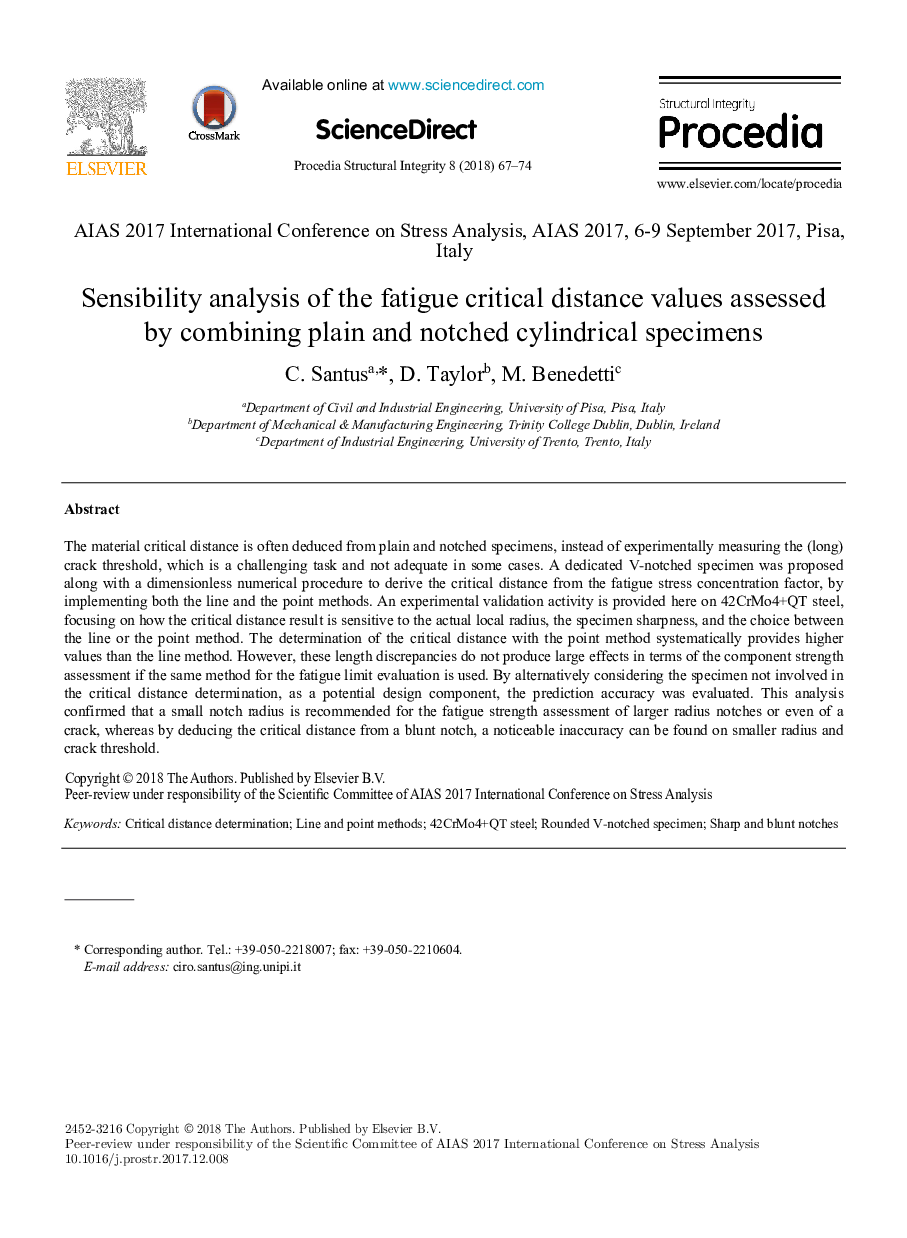| Article ID | Journal | Published Year | Pages | File Type |
|---|---|---|---|---|
| 7954568 | Procedia Structural Integrity | 2018 | 8 Pages |
Abstract
The material critical distance is often deduced from plain and notched specimens, instead of experimentally measuring the (long) crack threshold, which is a challenging task and not adequate in some cases. A dedicated V-notched specimen was proposed along with a dimensionless numerical procedure to derive the critical distance from the fatigue stress concentration factor, by implementing both the line and the point methods. An experimental validation activity is provided here on 42CrMo4+QT steel, focusing on how the critical distance result is sensitive to the actual local radius, the specimen sharpness, and the choice between the line or the point method. The determination of the critical distance with the point method systematically provides higher values than the line method. However, these length discrepancies do not produce large effects in terms of the component strength assessment if the same method for the fatigue limit evaluation is used. By alternatively considering the specimen not involved in the critical distance determination, as a potential design component, the prediction accuracy was evaluated. This analysis confirmed that a small notch radius is recommended for the fatigue strength assessment of larger radius notches or even of a crack, whereas by deducing the critical distance from a blunt notch, a noticeable inaccuracy can be found on smaller radius and crack threshold.
Keywords
Related Topics
Physical Sciences and Engineering
Materials Science
Materials Chemistry
Authors
C. Santus, D. Taylor, M. Benedetti,
